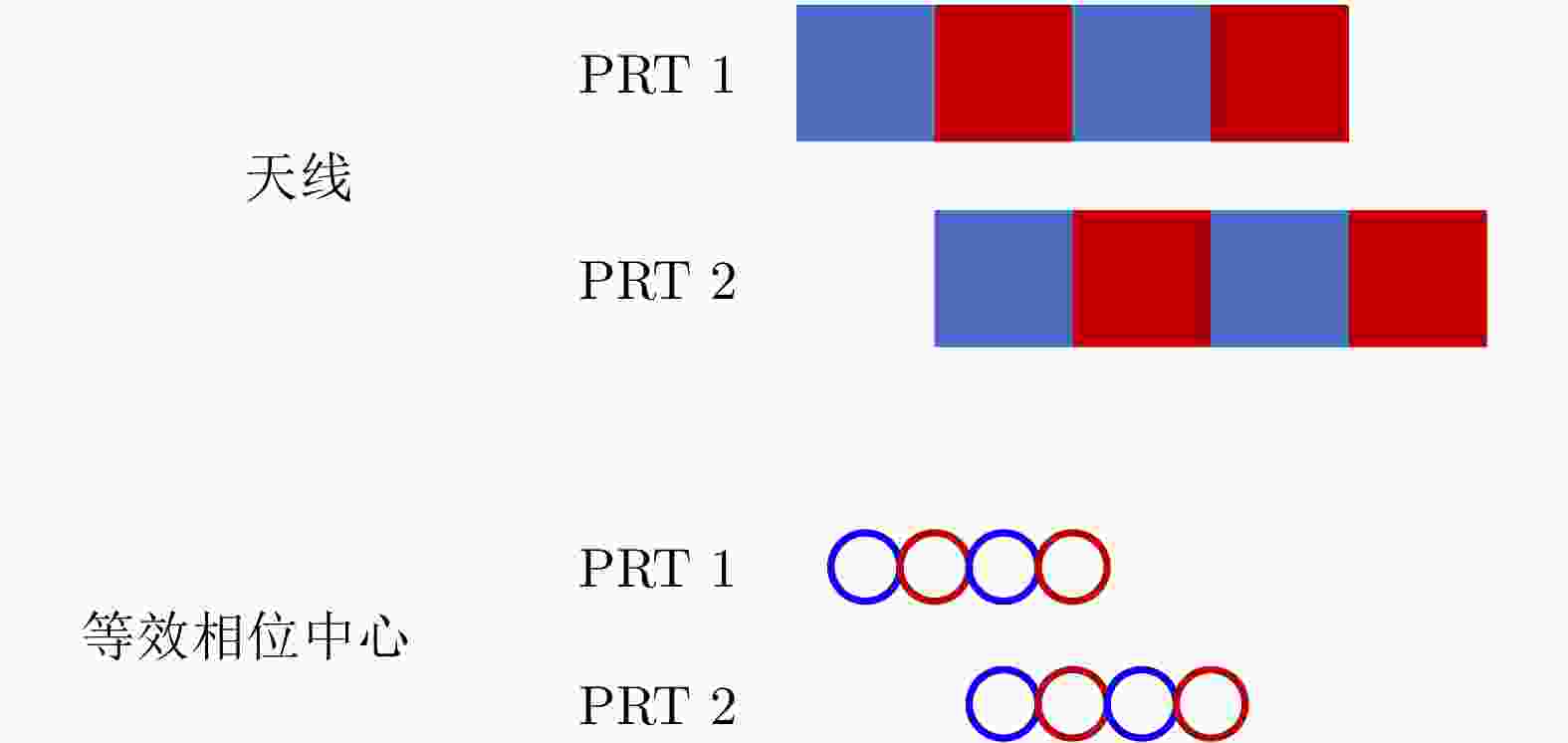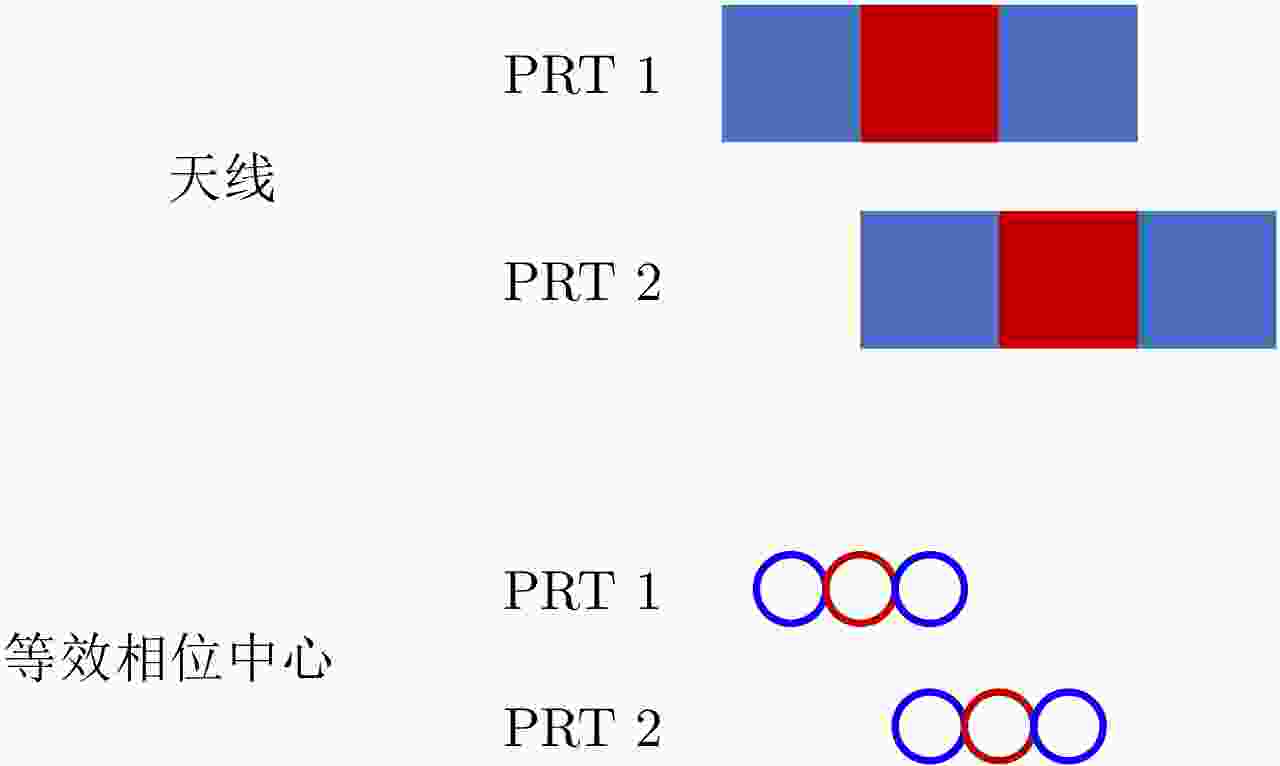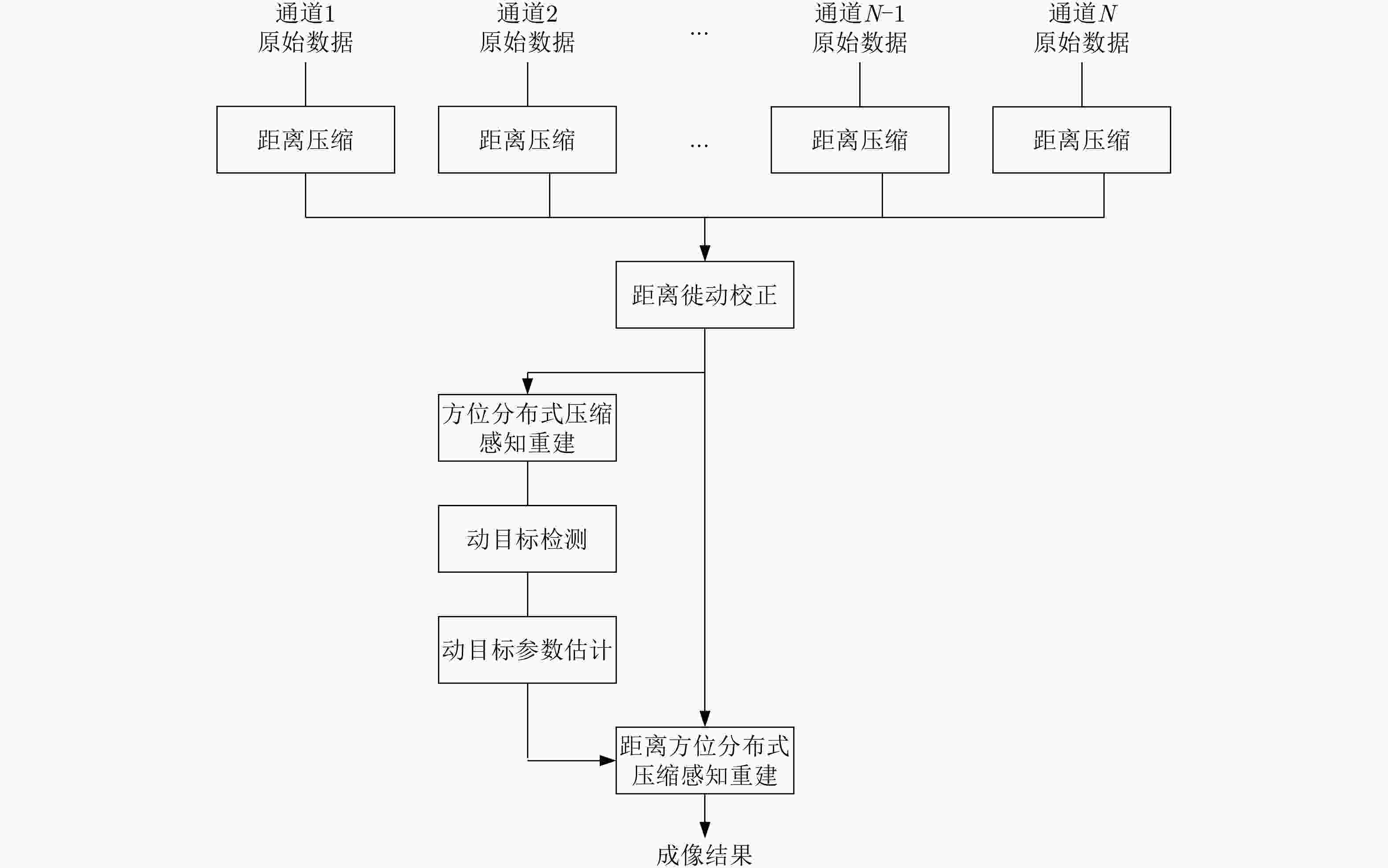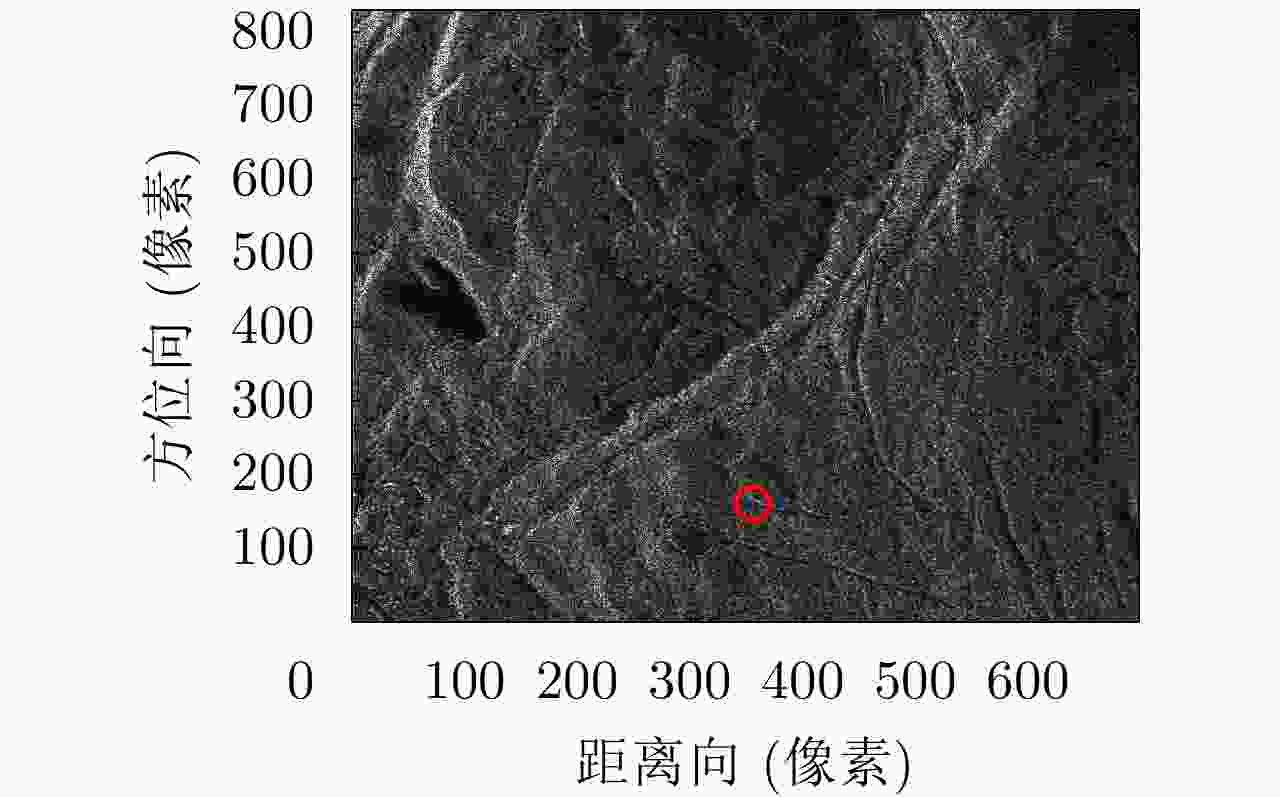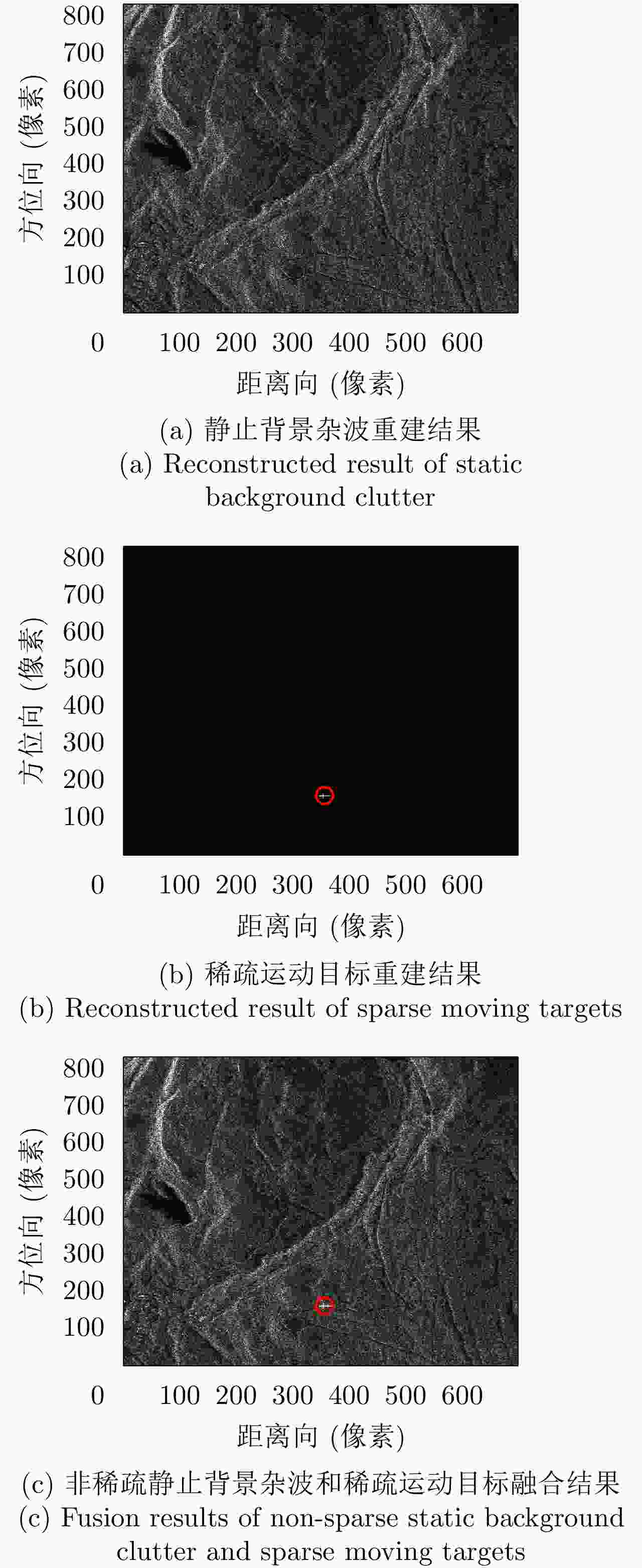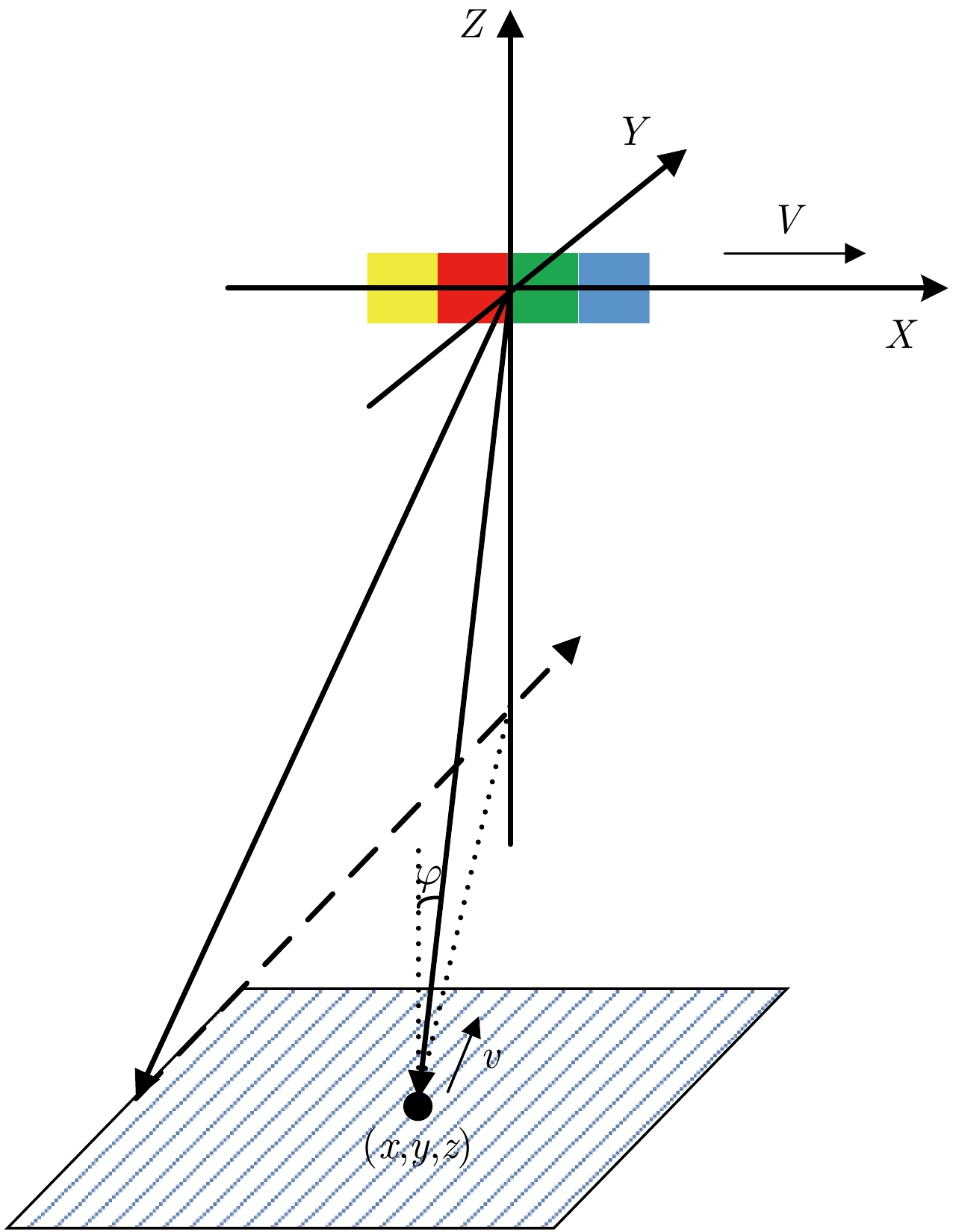High-resolution Wide-swath SAR Moving Target Imaging Technology Based on Distributed Compressed Sensing
-
摘要: 高分宽幅SAR动目标成像对目标跟踪具有重要的意义,常规天基多通道SAR技术要实现高分宽幅动目标成像需要通道数量巨大,系统复杂度过高,而且图像在方位向存在成对回波,形成虚警。针对上述问题,该文提出了一种基于分布式压缩感知的高分宽幅SAR动目标成像技术,在通道数量较大时,通道数量相比常规高分宽幅动目标成像构型通道数量约降低1倍,利用动目标稀疏特性和杂波背景非稀疏特性构建分布式压缩感知观测模型,采用先方位1维分布式压缩感知重建再距离方位2维分布式压缩感知重建,实现杂波背景和稀疏动目标的重建,并抑制多通道SAR动目标成像中的成对回波。结合RADAR-SAT数据的仿真试验结果验证了该技术的有效性。Abstract: High-resolution wide-swath SAR moving target imaging is of great significance for target tracking. To achieve target tracking, conversional space-based multichannel SAR technology requires a large number of channels. However, this leads to high system complexity. Moreover, paired false target echoes exist in the azimuth. To address such problems, a high-resolution wide-swath SAR moving target imaging technology based on distributed compressed sensing is proposed in this paper. When the number of channels is large enough, the number of channels is approximately half of that of the conventional high-resolution wide-swath target imaging configuration channel. A distributed compressed sensing observation model is constructed using the sparse property of moving targets and the nonsparse characteristics of the clutter background. Clutter background and sparse moving targets are reconstructed by combining one-dimensional distributed compressed sensing reconstruction in the azimuth and two-dimensional distributed compressed sensing reconstruction in the range-azimuth. Moreover, the paired false target echoes in multichannel SAR moving target are suppressed. The simulation results combined with RADAR-SAT data verify the effectiveness of the proposed technology.
-
表 1 算法流程
Table 1. Algorithm flowchart
(1) 对高分宽幅SAR动目标成像系统每个通道数据分别进行距离压缩处理,获得每个通道的1维距离图像; (2) 联合多通道数据转换到方位多普勒域进行距离徙动校正,之后转换回到方位时域,完成对静止目标距离徙动校正,而动目标由于相位
误差存在距离徙动校正误差;(3) 对距离徙动校正后的多通道数据构造方位1维分布式压缩感知模型,利用优化方法进行信号重建,分别获得非稀疏背景杂波和稀疏动目
标散射信息;(4) 根据稀疏动目标散射信息估计动目标的位置和速度参数; (5) 对距离徙动校正后的多通道数据根据运动目标位置和速度信息构造距离方位2维分布式压缩感知模型,利用优化方法进行信号重建,获
得非稀疏背景杂波和稀疏动目标散射信息;(6) 将运动目标信息${{{\sigma}} _2}$和背景杂波图像${{{\sigma}} _1}$融合形成完整的高分宽幅图像。 表 2 雷达系统主要参数
Table 2. Main parameters of radar system
参数 数值 工作频率 5.3 GHz 带宽 30 MHz 采样率 32.3 MHz PRF 1256.98 Hz 速度 7062 m/s 通道数 3 动目标速度 2.5 m/s -
[1] FREEMAN A, JOHNSON W T K, HUNEYCUTT B, et al. The "Myth" of the minimum SAR antenna area constraint[J]. IEEE Transactions on Geoscience and Remote Sensing, 2000, 38(1): 320–324. doi: 10.1109/36.823926 [2] ZHANG Shuangxi, XING Mengdao, XIA Xianggen, et al. Multichannel HRWS SAR imaging based on range-variant channel calibration and multi-doppler-direction restriction ambiguity suppression[J]. IEEE Transactions on Geoscience and Remote Sensing, 2014, 52(7): 4306–4327. doi: 10.1109/TGRS.2013.2281329 [3] 叶恺, 禹卫东, 徐伟, 等. 基于柱形抛物面天线的MIMO SAR研究[J]. 电子与信息学报, 2018, 40(8): 1816–1822. doi: 10.11999/JEIT171105YE Kai, YU Weidong, XU Wei, et al. Investigation on parabolic cylinder reflector based MIMO SAR[J]. Journal of Electronics &Information Technology, 2018, 40(8): 1816–1822. doi: 10.11999/JEIT171105 [4] DING Chibiao, LIANG Xingdong, WANG Jie, et al. An novel airborne MIMO-SAR system built in IECAS[C]. 2017 IEEE International Geoscience and Remote Sensing Symposium, Fort Worth, USA, 2017: 2423–2426. doi: 10.1109/IGARSS.2017.8127481. [5] 周建卫, 李道京, 田鹤, 等. 基于共形稀疏阵列的艇载外辐射源雷达性能分析[J]. 电子与信息学报, 2017, 39(5): 1058–1063. doi: 10.11999/JEIT160846ZHOU Jianwei, LI Daojing, TIAN He, et al. Performance analysis on airship-borne passive radar based on conformal sparse array[J]. Journal of Electronics &Information Technology, 2017, 39(5): 1058–1063. doi: 10.11999/JEIT160846 [6] KIRK J C, DARDEN S, MAJUMDER U, et al. Forty years of digital SAR and slow GMTI technology[C]. 2014 IEEE Radar Conference, Cincinnati, USA, 2014: 64–69. doi: 10.1109/RADAR.2014.6875556. [7] HENDERSON F M and LEWIS A J. Principles and Applications of Imaging Radar[M]. New York: Wiley, 1998. 89–90. [8] GIERULL C H. Statistical analysis of multilook SAR interferograms for CFAR detection of ground moving targets[J]. IEEE Transactions on Geoscience and Remote Sensing, 2004, 42(4): 691–701. doi: 10.1109/TGRS.2003.821886 [9] GEBERT N. Multi-channel azimuth processing for high-resolution wide-swath SAR imaging[D]. [Ph.D. dissertation], German Aerospace Center, 2009. [10] BAUMGARTNER S V and KRIEGER G. Simultaneous high-resolution wide-swath SAR imaging and ground moving target indication: Processing approaches and system concepts[J]. IEEE Journal of Selected Topics in Applied Earth Observations and Remote Sensing, 2015, 8(11): 5015–5029. doi: 10.1109/JSTARS.2015.2450019 [11] SUN Guangcai, XING Mengdao, XIA Xianggen, et al. Robust ground moving-target imaging using deramp-keystone processing[J]. IEEE Transactions on Geoscience and Remote Sensing, 2012, 51(2): 966–982. doi: 10.1109/TGRS.2012.2204889 [12] LAZAROV A D and MINCHEV C N. SAR imaging of a moving target[C]. The 2007 3rd International Conference on Recent Advances in Space Technologies, Istanbul, Turkey, 2017: 366–372. doi: 10.1109/RAST.2007.4284014. [13] ZHANG Shuangxi, XING Mengdao, XIA Xianggen, et al. A robust channel-calibration algorithm for multi-channel in azimuth HRWS SAR imaging based on local maximum-likelihood weighted minimum entropy[J]. IEEE Transactions on Image Processing, 2013, 22(12): 5294–5305. doi: 10.1109/TIP.2013.2274387 [14] ZHANG Yun, GUO Yiran, JI Zhenyuan, et al. A novel algorithm of radial velocity estimation for MC-HRWS system[C]. 2017 International Conference on Communications, Signal Processing, and Systems, Harbin, China, 2019: 1396–1403. doi: 10.1007/978-981-10-6571-2_168. [15] CANDES E J and TAO T. Near-optimal signal recovery from random projections: Universal encoding strategies?[J]. IEEE Transactions on Information Theory, 2006, 52(12): 5406–5425. doi: 10.1109/TIT.2006.885507 [16] DUARTE M F, SARVOTHAM S, BARON D, et al. Distributed compressed sensing of jointly sparse signals[C]. Conference Record of the Thirty-Ninth Asilomar Conference on Signals, Systems and Computers, Pacific Grove, USA, 2005: 1537–1541. doi: 10.1109/ACSSC.2005.1600024. -



 作者中心
作者中心 专家审稿
专家审稿 责编办公
责编办公 编辑办公
编辑办公
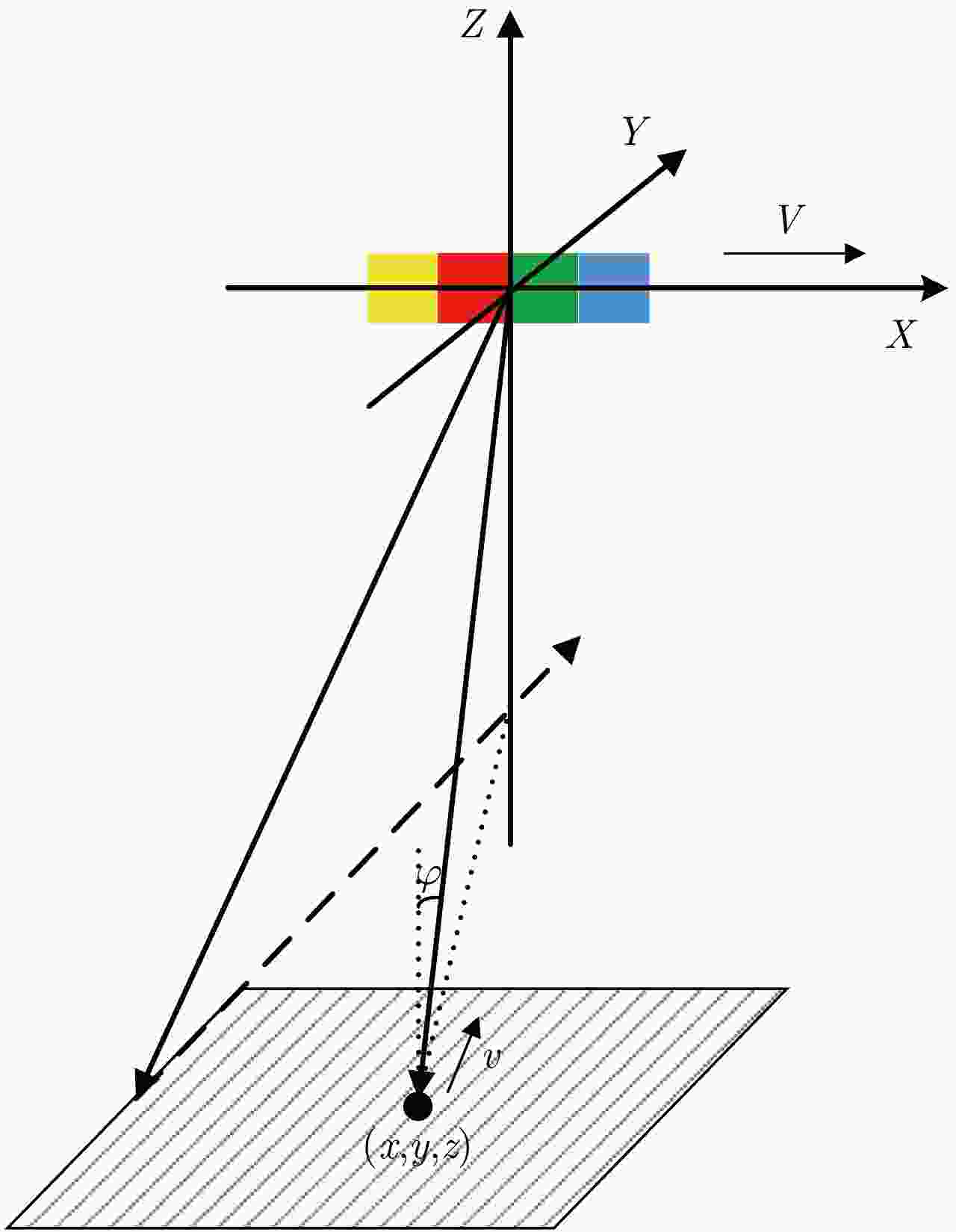
 下载:
下载:
